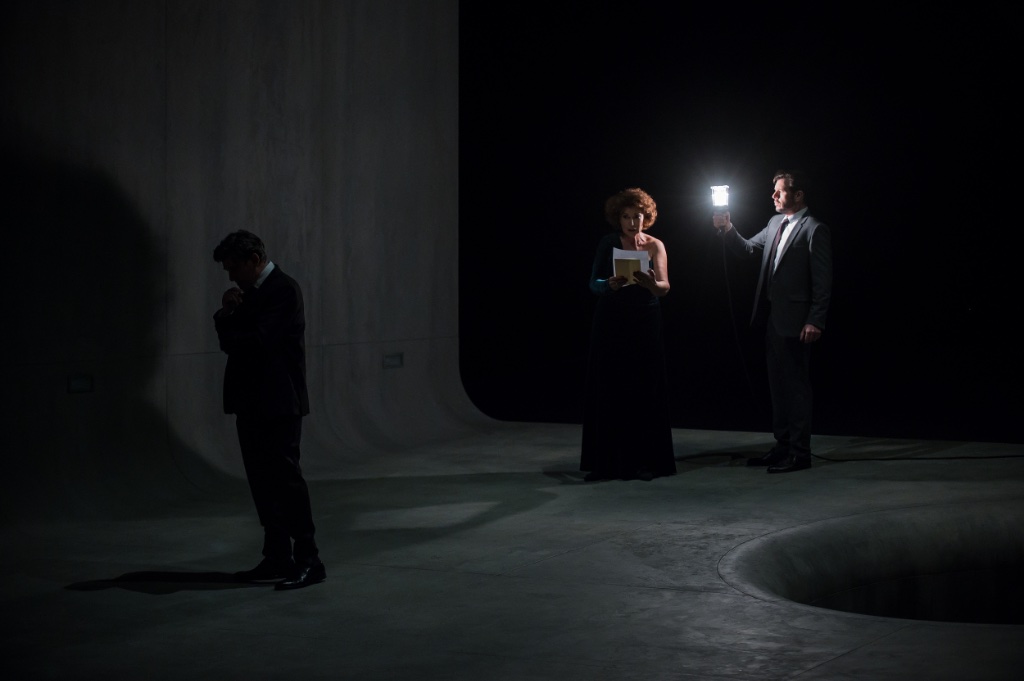
Recently, in an article on Francis Poulenc’s Dialogues des Carmélites, I suggested that the only other 20th-century French opera that will stand the test of time is Claude Debussy’s Pelléas et Mélisande (1902), inspired by Maurice Maeterlink’s symbolist play from 1893. It was therefore a delight to re-encounter the opera through a new production by the Lille Opera House, freely available to view on YouTube until October 9. The generosity of many arts organizations during the pandemic in opening up their repertoire online has been one of the few high points of this terrible time. We can only hope that the public will repay such largesse by supporting the arts once theaters and concert halls are able to open fully again.
Although Debussy was inspired by Richard Wagner’s technique of through-composition and use of leitmotifs – musical reminders of people, places and ideas, bringing out the significance of what lies beneath the surface – the musical language of the opera is totally his own, enhancing the exquisite mystery of the dreamlike setting and bringing out on a sonic level the theme of darkness and light that so haunts the storyline.
Daniel Jeanneteau’s minimalist production plays on the contrasts of the musical score, with the stage often completely dark, the only light being provided by the singers carrying torches or lamps. For the most part, the stage remains bare, dominated by a huge oval hole that variously shows the spring in the opening scene, in which Golaud discovers the weeping Mélisande; the well beside which Golaud’s younger half-brother Pelléas and Mélisande cavort and into which Mélisande drops her wedding ring in Act 2 and where (in this production) Pelléas falls after being stabbed by the jealous Golaud in Act 4; and the stagnant pool in Act 3.
The starkness of the set and the modern dress of the singers mostly work very well here, illustrating the universality of this tale of forbidden love. The simplicity of the words (from Mélisande’s opening line to Golaud, “Don’t touch me,” to her repeated “I am not happy”) masks the much more complex cycles of abuse that seem to haunt all the characters. One of the many questions that remain unanswered is “Who is Mélisande and where does she come from?” All we are told is that she is “from far away.” When Golaud asks her age, she simply does not reply.
Inevitably, some scenes work less well than others in this staging. The eroticism and verticality of Act 3, during which Pelléas becomes entangled in Mélisande’s hair as it hangs down from her window, are completely lost by having the close-cropped Vannina Santoni (Mélisande) and Julien Behr (Pelléas) stand on the same level side by side. Much more effective is the terrifying scene in which Golaud (sung with increasing menace by the excellent Alexandre Duhamel) places his young son Yniold (the very impressive Hadrien Joubert) on his shoulders to spy on Pelléas and Mélisande.
The exceptional quality of all the singers is a credit to the Opéra de Lille. Santoni has a mesmerizing presence and a captivating soprano voice, with Behr’s tenor matching her intensity. Of the other singers, the veteran Jean Teitgen as Arkel, the grandfather of Golaud and Pelléas, convincingly combines gravitas and creepiness, and Marie-Ange Todorovitch’s Geneviève is beautifully sung.
Conductor François-Xavier Roth brings out all the diverse colors and textures of Debussy’s orchestration with his orchestra Les Siècles, which uses period instruments from the end of the 19th century. This is a thrilling operatic experience.
Nick Hammond’s latest book, The Powers of Sound and Song in Early Modern Paris, is now available in paperback and as an e-book here and from online vendors.
Favorite